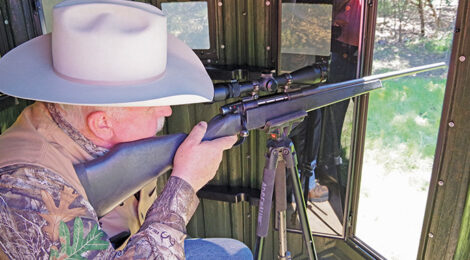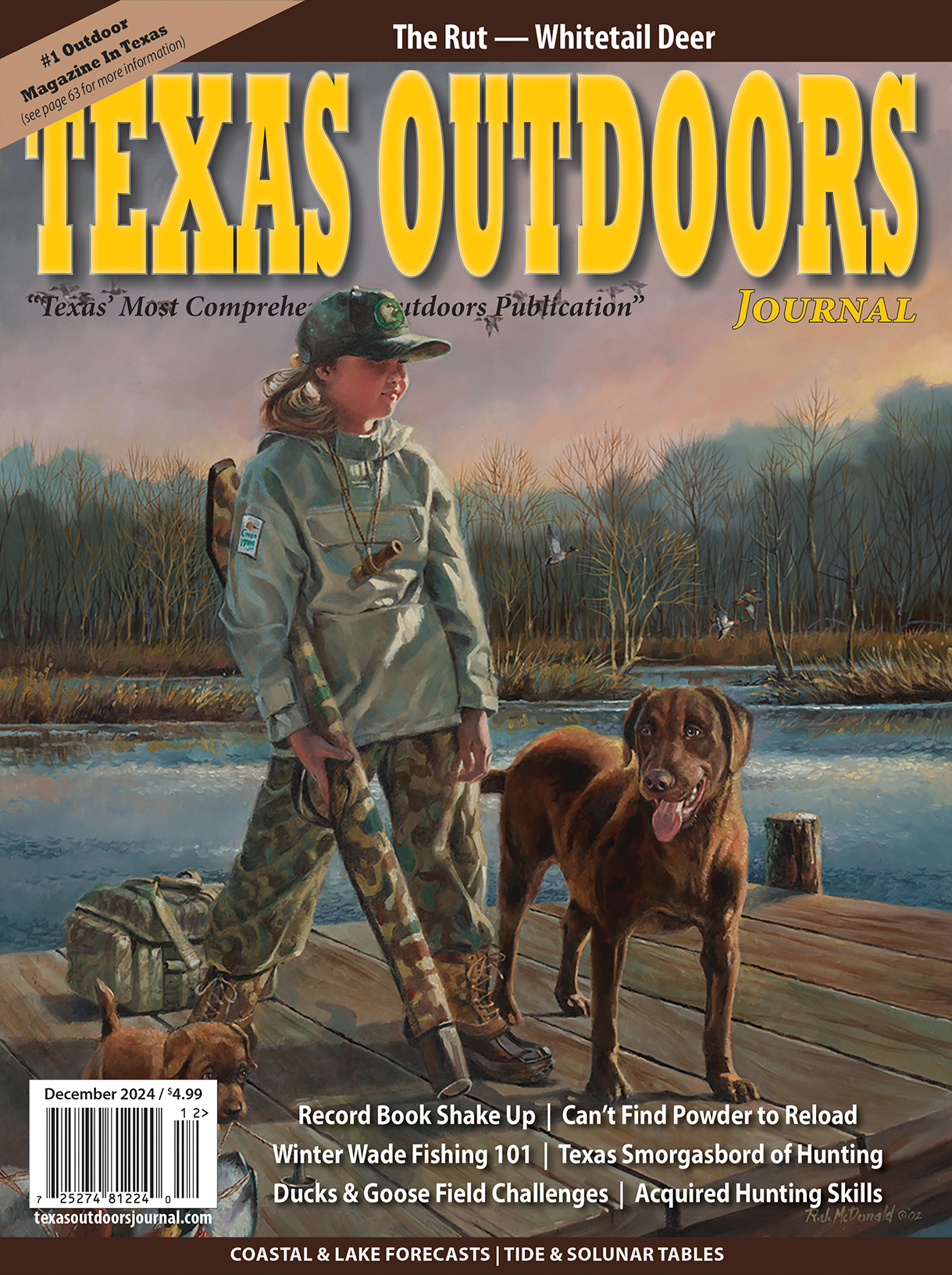
Blind Sense & Selection
Story by Bill L. Olson
The majority of Texas deer hunters hunt from a four foot by four foot, or maybe four by eight foot “box blind”. From their concealed square or rectangular observatory, they watch over feeders, food plots, water resources, game trails and other whitetail corridors plus active game sign.
When it comes time to place, replace or relocate a blind much consideration goes into where it should be positioned depending upon type of terrain and vegetational cover in the area. Based upon these factors the height of tower to be used, or not used will be made.
With Texas diverse landscape different regions require different blind placements. In areas generally flat with open parks the use of short or on-the-ground placement may be best. Areas with oak motts, tall trees and brush, having a blind that sits under the foliage canopy may be the best option offering increased visibility. It is better to glass areas under the limbs and leaves rather than having lines of sight obscured by them.
Low brush, cactus flats and gently rolling to flat terrain affords a different set up. A taller tower will allow a hunter to obtain a vantage point above the ground cover, vegetation clutter and terrain subtilties.
Hunting areas where senderos have been cut offers shooting corridors and game attracting edge. Tall towers allow an opportunity to see into the surrounding cover to spot animals that may be moving through or about to step into the open.
************************************************************************
To read more, click here to SUBSCRIBE








